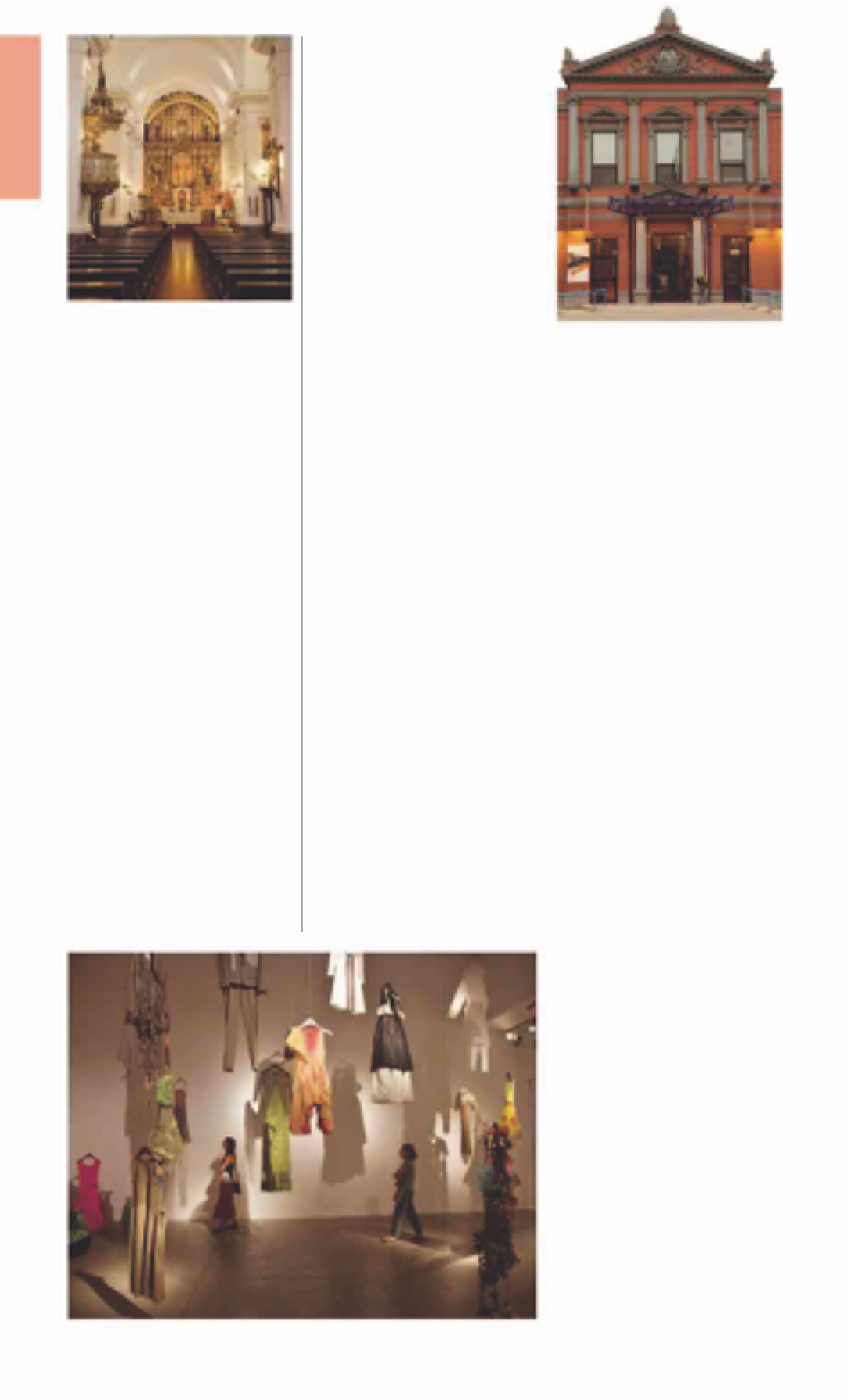Travel Reference
In-Depth Information
panoramic view of the river and
recount the history of the
church as well as the area. Inside
is a beautiful Baroque altar, fea-
turing Inca motifs, which was
brought along the Camino Real
mule-train route from Peru. The
church is often open between
services, and visitors can wander
down into the crypt and see a
small but interesting collection
of religious art contained in one
of the adjoining cloisters.
The exquisite Baroque altar at the Iglesia de
Nuestra Señora del Pilar
Centro Cultural Recoleta, venue of exciting
artistic experimentation
2
Centro Cultural
Recoleta
Junín 1930.
City Map
2 C2.
Te l
(011)
4803-1040.
@
10, 17, 60, 92, 110.
Open
1-8pm Tue−Fri, 10am−9pm
Sat, Sun, & hols.
7
=
∑
centro
culturalrecoleta.org/nuevositio
1
Iglesia de
Nuestra Señora
del Pilar
Junín 1904.
City Map
2 C2.
Te l
(011)
4803-6793.
@
10, 17, 60, 92, 110.
Open
varies.
5
8am, 11am, & 7:30pm
Mon-Fri, 8:30am, 11am, & 7pm Sat,
8.30am, 10am, 11am, noon, 7pm, 8pm,
9pm Sun.
∑
basilicadelpilar.org.ar
Torcuato de Alvear, began a
campaign to Europeanize and
embellish the city, and this
prime chunk of real estate
was reclaimed for the barrio.
Architect Juan Buschiazzo
was responsible for the
refurbishment, adding the
pavilions, elegant Italianate
terraces, and a chapel, which is
now an auditorium. After a brief
period as a home for the elderly,
the complex was remodeled in
1980 and became the Centro
Cultural Recoleta (CCR).
The barrio may be ultra-
bourgeois, but there is nothing
conservative about the
schedule of art events that take
place at this sprawling cultural
center. About 20 galleries are
used for stimulating visual arts
exhibitions, various theatrical
works, and film projections.
A number of small dance and
theater companies use the
CCR as a rehearsal space.
This complex of buildings dates
from the 17th century and is
one of the oldest in the city.
The plot was donated to the
monks of Recoleta in 1716, and
Jesuit architects Juan Krauss
and Juan Wolf drew up the
plans. Andrés Blanqui is thought
to have worked on the façade
and interiors of the on-site
monastery. During the 19th
century the building served as
an art school founded by
liberation hero General Manuel
Belgrano, and also as a refuge
for the local homeless.
The Recoleta barrio became
popular with the middle classes
in the 1870s. During this time,
the first mayor of Buenos Aires,
Donated to the monks of
Recoleta in 1716 by Zaragoza-
born entrepreneur Don Juan de
Narbona, this church takes its
name from Zaragoza's patron
saint, Señora del Pilar (Virgin of
Pilar). Jesuit architect Andrés
Blanqui built it along the lines of
a classic Spanish church of the
period. Later refinements include
an exterior clock made in Britain
and Pas-de-Calais ceramic tiles.
The exterior murals are
inspired by the work of Spanish
painter Fernando Brambilia, an
18th-century specialist in
perspective. They show a
3
Cementerio de
la Recoleta
See pp104-5.
4
Café La Biela
Ave Quintana 600.
City Map
2 C2.
Te l
(011) 4804-0449.
@
59, 60, 101, 102,
110.
Open
7-3am daily.
7
∑
labiela.com
If it lacks the atmosphere and
artistic ghosts of the grand Café
Tortoni
(see p72),
La Biela still has
a certain old-world appeal. The
terrace could be housed in the
streets of Rome or Paris, except
A contemporary installation at the Centro Cultural Recoleta
For hotels and restaurants see pp278-83 and pp288-99





































